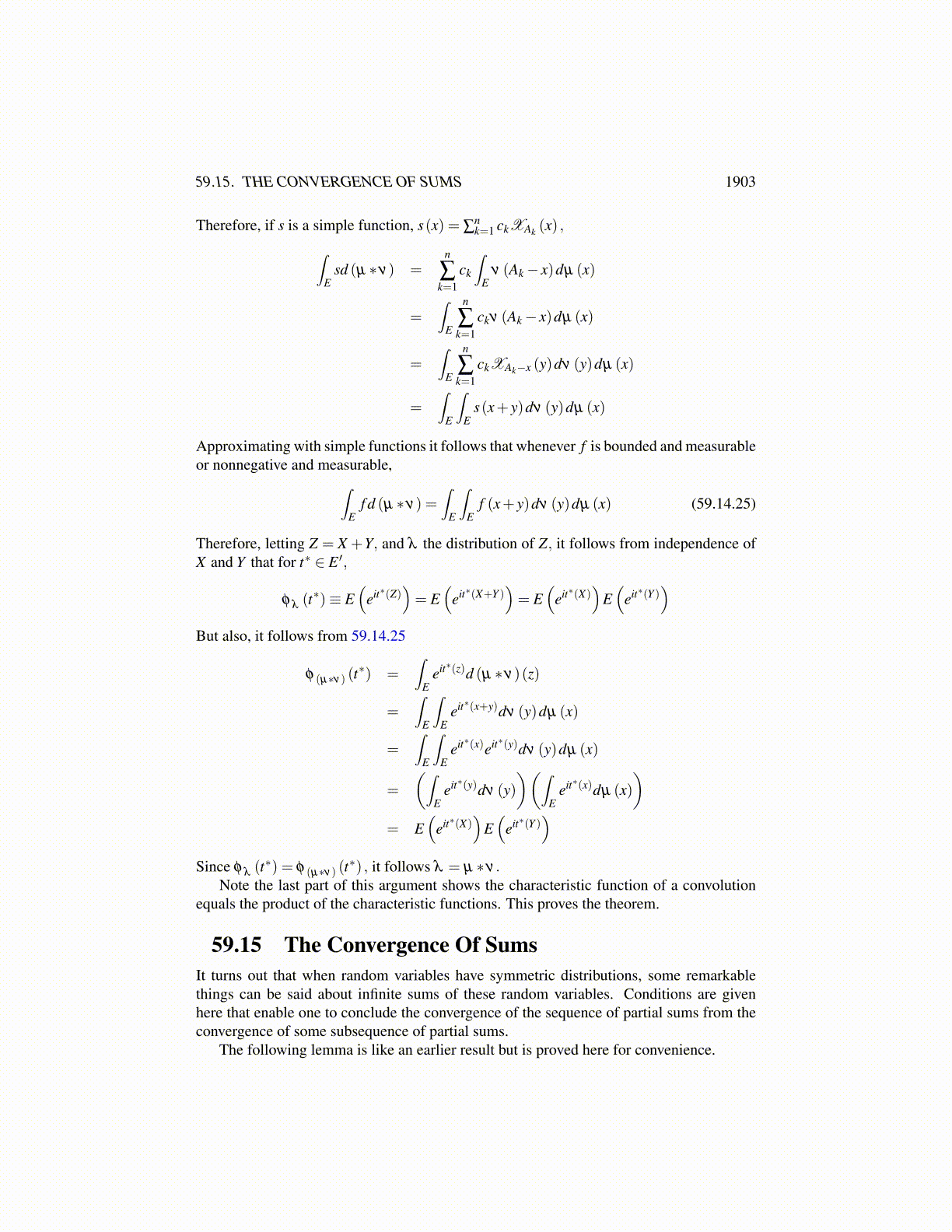
59.14. CONVOLUTION AND SUMS 1903
contains the open sets of Em because the separability of E implies the existence of a count-able basis for the topology of Em consisting of sets of the form ∏
mi=1 Ui where the Ui come
from a countable basis for E. Since every open set is the countable union of sets like theabove, each being a measurable box, the open sets are contained in
B (E)×·· ·×B (E)
which implies B (Em)⊆B (E)×·· ·×B (E) also. This proves the lemma.With this lemma, it is possible to define the convolution of two finite measures.
Definition 59.14.5 Let µ and ν be two finite measures on B (E) , for E a separable Banachspace. Then define a new measure, µ ∗ν on B (E) as follows
µ ∗ν (A)≡∫
Eν (A− x)dµ (x) .
This is well defined because of Lemma 59.14.4 which says that x → ν (A− x) is Borelmeasurable.
Here is an interesting theorem about convolutions. However, first here is a little lemma.The following picture is descriptive of the set described in the following lemma.
AE
E
SA
Lemma 59.14.6 For A a Borel set in E, a separable Banach space, define
SA ≡ {(x,y) ∈ E×E : x+ y ∈ A}
Then SA ∈B (E)×B (E) , the σ algebra of product measurable sets, the smallest σ alge-bra which contains all the sets of the form A×B where A and B are Borel.
Proof: Let K denote the open sets in E. Then K is a π system. Let
G ≡ {A ∈ σ (K ) = B (E) : SA ∈B (E)×B (E)} .
Then K ⊆ G because if U ∈K then SU is an open set in E×E and all open sets are inB (E)×B (E) because a countable basis for the topology of E ×E are sets of the formB×C where B and C come from a countable basis for E. Therefore, K ⊆ G . Now let